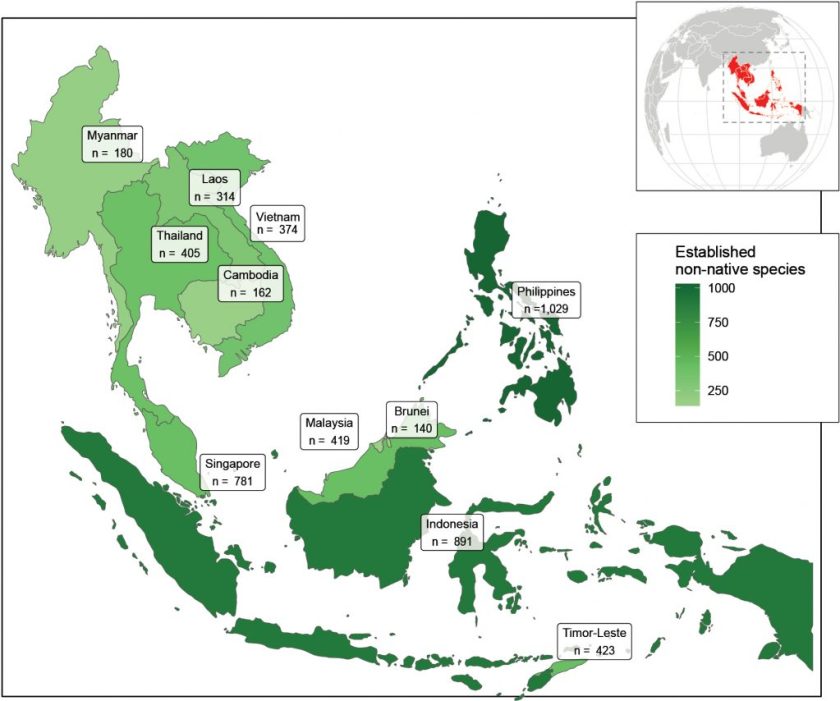The open-access journal NeoBiota has published its milestone 100th issue, celebrating more than fourteen years of advancing research on biological invasions and their impacts on biodiversity, ecosystems, and society. The milestone comes at a time of great achievement for the Pensoft-published journal in terms of editorial leadership, readership growth, and international recognition.
New editorial leadership
Last year, NeoBiota welcomed a new editorial leadership team, as Dr. Ana Novoa Perez, Prof. Tammy Robinson, Prof. Phil Hulme and Dr. Andrew “Sandy” Liebhold joined forces to bring a wealth of expertise to the journal.
Strong impact and rankings
According to the 2024 release of Web of Science metrics, NeoBiota achieved a Journal Impact Factor (JIF) of 3.0, maintaining its Q1 position in Biodiversity Conservation. At the same time, Scopus reported an impressive CiteScore of 6.8, which secures the journal a Q1 ranking across seven categories: Animal Science and Zoology; Ecology, Evolution, Behavior and Systematics; Insect Science; Aquatic Science; Plant Science; Ecology; and Ecological Modeling.
The rankings underscore the journal’s influence across ecological disciplines and its continued recognition as a leading publication in invasion science.
Growing global readership
NeoBiota has also experienced remarkable growth in readership. In just the latest quarter, articles published in the journal have attracted over 220,000 views from 90,000 unique readers worldwide.
This increase in readership, coupled with the journal’s focus on strong science communication, has attracted international media attention to NeoBiota’s research papers, such as this piece on the spread of lionfish in the Mediterranean Sea published in BBC Wildlife.
Highlights from the 100th issue
The landmark issue features a collection of articles that reflect the journal’s mission to expand both the geographical and conceptual scope of invasion science:
Non-native species in the Philippines and Southeast Asia (read here) by Neil Angelo Abreo, Antonín Kouba, Elizabeta Briski, Danish A. Ahmed, Ismael Soto, Phillip J. Haubrock – Part of the topical collection Developing lists of alien taxa in the Global South: workflows, protocols, processes, and experiences.

Compiling and analyzing the non-native flora of a megadiverse Neotropical country: a new catalogue for continental Ecuador (read here) by Ileana Herrera, Anahí Vargas, Kimberly Rizzo, Zhofre Aguirre, Isabella Dillon, Brunny Espinoza-Amén, Felipe Espinoza De Janon, Andrés Espinoza-Maticurena, José R. Ferrer-Paris, Efraín Freire, Carlos Gómez-Bellver, Diego Gutiérrez del Pozo, Vanessa Lozano, Alejandra Moscoso-Estrella, Nora H. Oleas, Kevin Panchana, Sebastián Pardo, Katya Romoleroux, Verónica Sandoya, Carmen Ulloa Ulloa, Isabela Vieira, Jordi López-Pujol – Also part of the above topical collection focusing on the Global South
Acacia invasion triggers cascading effects above- and belowground in fragmented forests (read here) by Raquel Juan-Ovejero, Filipa Reis, Pedro Martins da Silva, Elizabete Marchante, Fernanda Garcia, Maria Celeste Dias, Filipe Covelo, António Alves da Silva, Helena Freitas, José Paulo Sousa, Joana Alves.

Transparency and reproducibility in invasion science (read here) by Fabio Mologni, Jason Pither.
Taken together, these contributions highlight both regional challenges, such as managing alien taxa in biodiversity hotspots, and broader conceptual issues, including methodological rigour in invasion science research.
–
As NeoBiota celebrates its 100th issue, it continues to push the boundaries of open, accessible, and impactful publishing in invasion science. With new leadership, growing readership, and a commitment to innovation in scholarly communication, the journal is poised for further growth in its next hundred issues. Explore the full 100th issue here.



